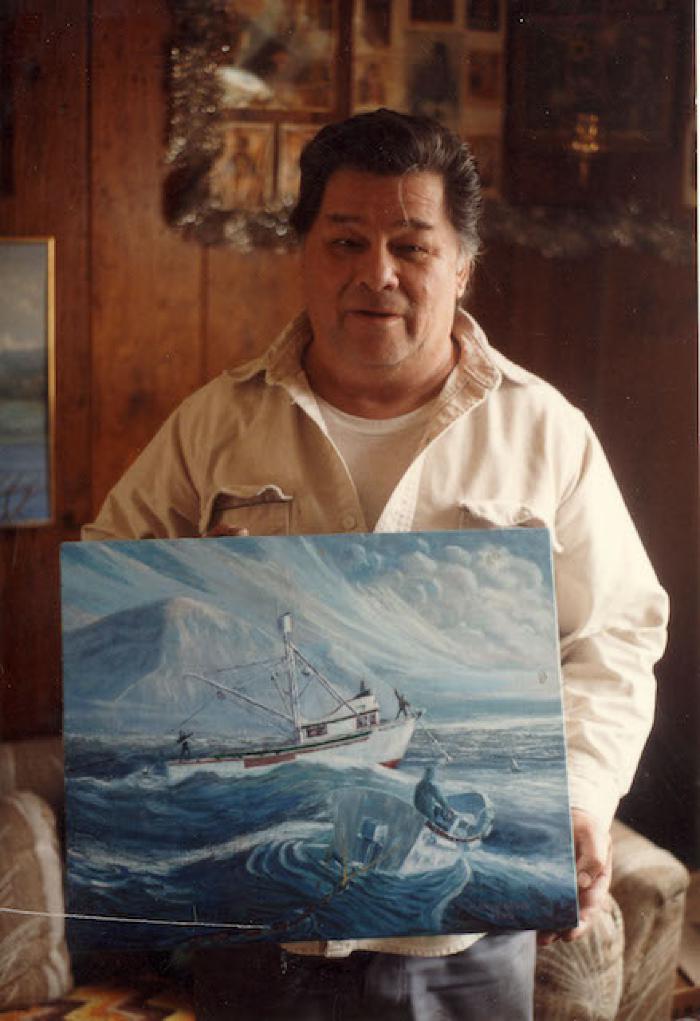Artist — Mun'arta

Art is a form of communication. Singing, dancing, drawing, sculpting, and many other types of expression help people to interpret the world and share their thoughts and experiences. The term “cultural arts” refers to the entire set of creative customs within a culture. In addition to painting or acting, the cultural arts can include activities like cooking, clothing design, or treating the sick.
In classical Alutiiq society, the cultural arts were part of every person’s life. The sod house was much more than a place to eat and sleep. It was a studio where people carved masks, composed songs, choreographed dances, and embroidered clothing. It was also a classroom. Here young people learned artistic skills by observing adults and participating in increasingly complex tasks. At a young age children practiced simple projects like braiding a line. They also helped to collect and process materials and contributed to communal activities, like sewing the cover for a skin boat. Eventually, as their abilities grew, they began to make their own creations.
There was more to becoming an artist than learning manufacturing, design, or composition, however. Young people also had to understand their place in the universe. Every Alutiiq object demonstrated respect for the natural world and was a visual reminder that animals gave themselves to people who behaved appropriately. By using and recycling materials carefully, and by creating beautiful objects, young artists learned to honor the spirits of plants and animals and helped perpetuate the cycle of life.
